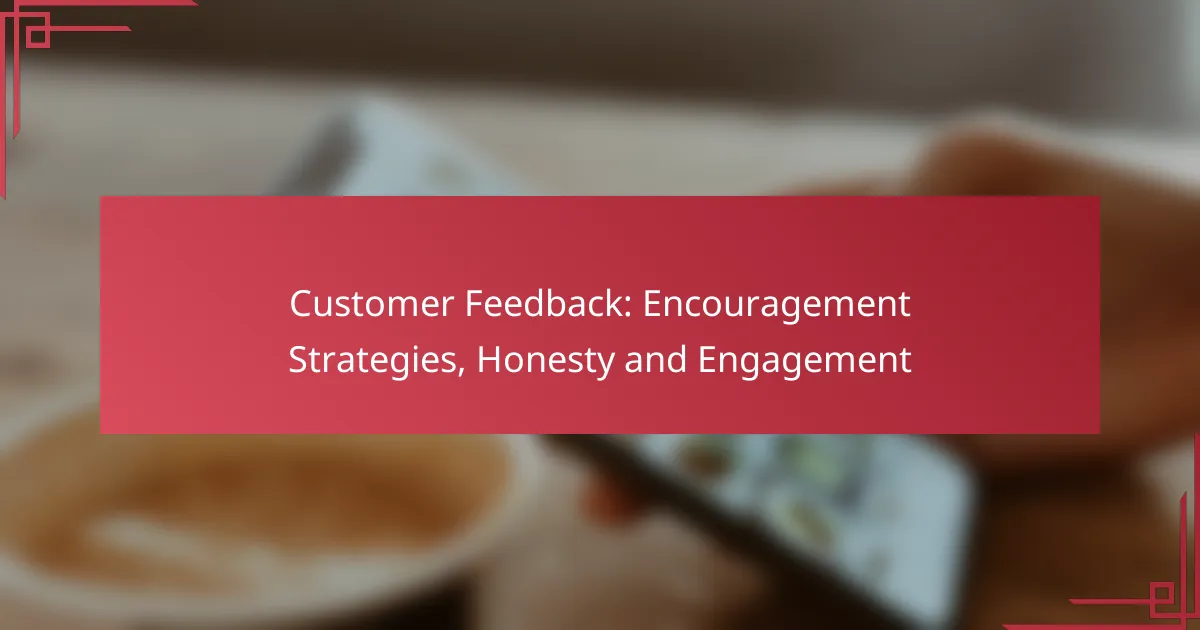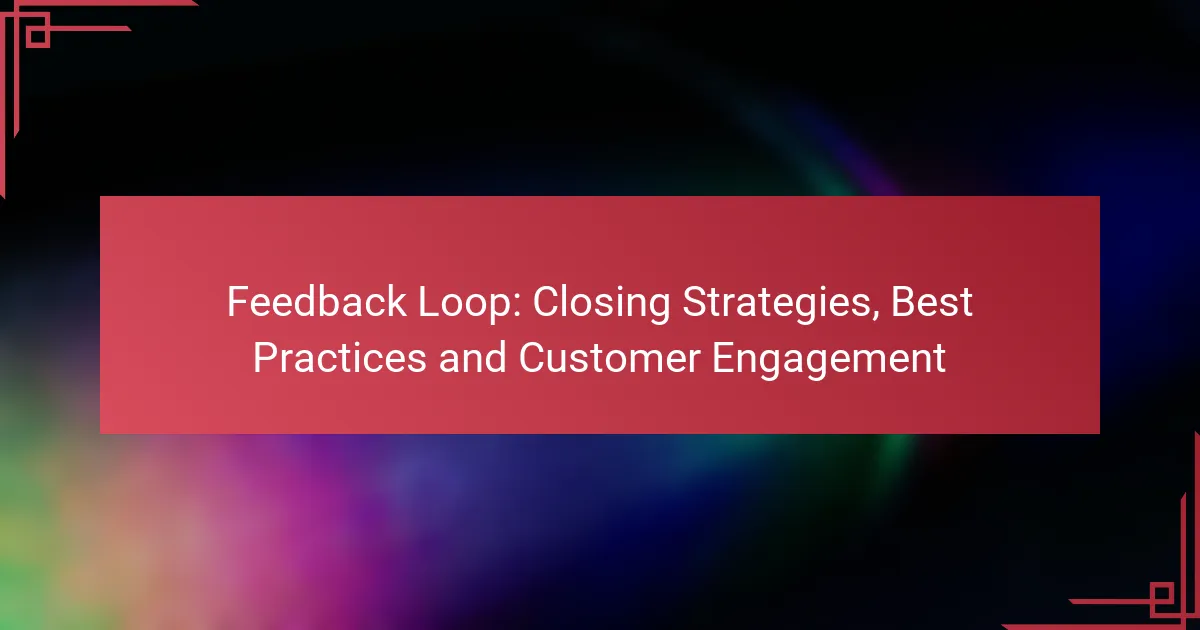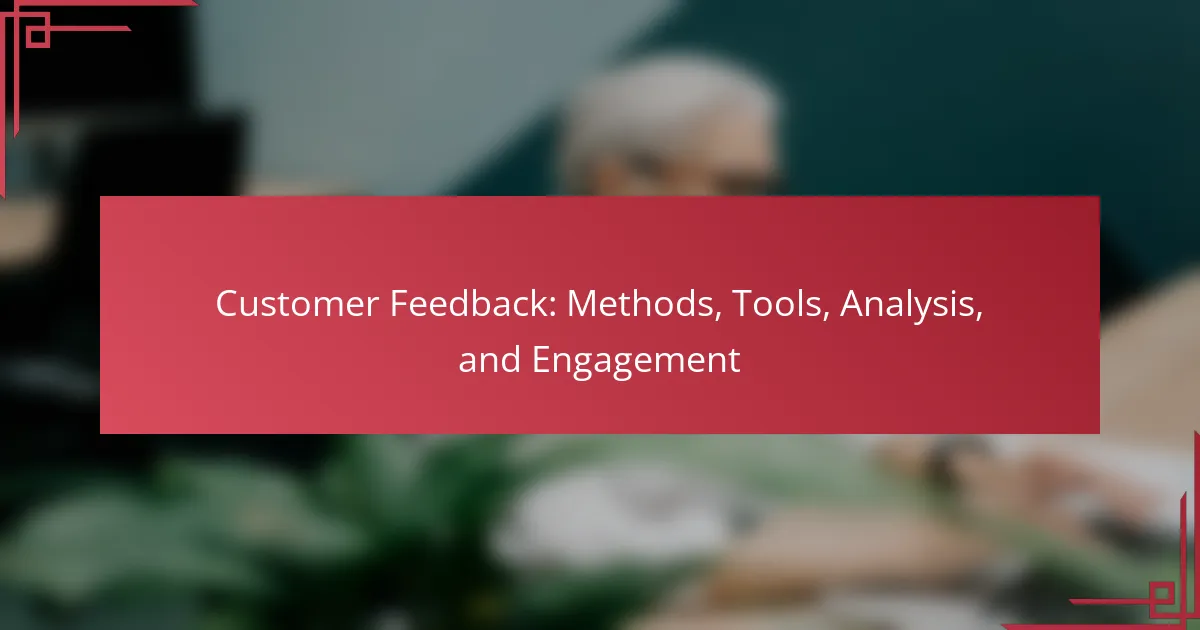Encouraging customer feedback is essential for businesses looking to improve their services and foster loyalty. By implementing strategies that simplify the feedback process and reward participation, companies can gather valuable insights. Creating a safe environment for honest opinions and actively engaging with customers further enhances the feedback experience, leading to meaningful improvements and stronger relationships.

How can businesses encourage customer feedback in the UK?
Businesses in the UK can encourage customer feedback by implementing strategies that make it easy and rewarding for customers to share their opinions. Effective methods include offering incentives, personalizing communication, engaging on social media, conducting surveys, and utilizing feedback kiosks.
Incentive programs
Incentive programs motivate customers to provide feedback by offering rewards such as discounts, loyalty points, or entry into prize draws. These programs can significantly increase participation rates, as customers feel their time and opinions are valued. For instance, a retail store might offer a 10% discount on the next purchase for completing a feedback form.
When designing an incentive program, ensure that the rewards are appealing and relevant to your target audience. Avoid overly complex systems that may deter participation; simplicity often leads to better engagement.
Personalized follow-ups
Personalized follow-ups can enhance customer feedback by making customers feel acknowledged and appreciated. Sending tailored emails or messages thanking customers for their input and asking for further insights can foster a sense of connection. For example, a restaurant might follow up with diners after a meal, asking for their thoughts on the service and food quality.
To maximize effectiveness, use customer names and reference specific interactions. This approach not only encourages more feedback but also builds customer loyalty.
Social media engagement
Engaging customers on social media platforms is a powerful way to encourage feedback. Businesses can create posts asking for opinions, run polls, or initiate discussions about products and services. This not only garners immediate responses but also shows that the business values customer input.
Be responsive to comments and messages, as this interaction can lead to more customers feeling comfortable sharing their thoughts. Regularly monitoring social media channels is essential to capture feedback promptly and effectively.
Customer satisfaction surveys
Customer satisfaction surveys are structured tools that help businesses gather detailed feedback on specific aspects of their service or product. These surveys can be distributed via email, on websites, or through mobile apps, and should be concise to encourage completion.
Consider using a mix of quantitative questions (like rating scales) and qualitative questions (open-ended responses) to gain comprehensive insights. Offering a small incentive for completing the survey can further increase response rates.
Feedback kiosks
Feedback kiosks are physical or digital stations placed in strategic locations where customers can easily provide feedback. These kiosks can be set up in-store or at events, allowing for immediate responses while the experience is still fresh in customers’ minds.
Ensure that kiosks are user-friendly and accessible. Providing a simple interface and clear instructions can help maximize participation. Additionally, consider integrating a system that allows for real-time feedback analysis to address issues quickly.

What strategies promote honest customer feedback?
Encouraging honest customer feedback involves creating a safe environment where customers feel valued and heard. Implementing strategies such as anonymity, transparent communication, and active listening can significantly enhance the quality and quantity of feedback received.
Anonymity in feedback collection
Providing anonymity in feedback collection allows customers to express their thoughts without fear of repercussions. This can be achieved through anonymous surveys or feedback forms, which often lead to more candid responses.
Consider using tools that allow for anonymous submissions, such as online survey platforms. This approach can increase participation rates, as customers may feel more comfortable sharing their true opinions when their identities are protected.
Transparent communication
Transparent communication fosters trust between businesses and customers, encouraging them to share honest feedback. Clearly explain how feedback will be used and any changes made as a result, which can motivate customers to contribute their insights.
Regularly update customers on improvements made based on their feedback. This not only shows that their opinions matter but also reinforces a culture of openness and responsiveness.
Active listening techniques
Active listening techniques involve fully engaging with customer feedback to understand their needs and concerns. This can include paraphrasing their comments, asking clarifying questions, and acknowledging their feelings.
Implementing these techniques during feedback sessions can help customers feel valued and understood. For instance, during a feedback call, summarizing what the customer has said and asking if you understood correctly can enhance their willingness to share more insights.

How can businesses engage customers effectively?
Businesses can engage customers effectively by fostering open communication and actively responding to their feedback. This involves creating channels for dialogue, implementing suggestions, and keeping customers informed about changes based on their input.
Regular updates on feedback implementation
Providing regular updates on how customer feedback is being implemented helps build trust and shows that businesses value their customers’ opinions. This can be done through newsletters, social media posts, or dedicated sections on the company website.
Consider sharing specific examples of changes made in response to feedback. For instance, if customers requested longer store hours, highlight the decision to extend hours and the positive impact it has had on customer satisfaction.
Creating community forums
Community forums allow customers to share their experiences and suggestions in a collaborative environment. These platforms can foster a sense of belonging and encourage more honest feedback, as customers feel their voices are heard.
When setting up a forum, ensure it is user-friendly and moderated to maintain a positive atmosphere. Encourage participation by hosting discussions on relevant topics or offering incentives for active contributors.
Utilizing customer testimonials
Customer testimonials serve as powerful tools for engagement and credibility. By showcasing positive feedback from satisfied customers, businesses can reinforce trust and attract new clients.
Collect testimonials through surveys or direct outreach, and display them prominently on your website and marketing materials. Consider using a mix of written quotes and video testimonials to appeal to different audiences.

What are the best practices for collecting customer feedback?
Effective customer feedback collection involves strategic planning, clear communication, and utilizing various channels. By implementing best practices, businesses can enhance engagement and gain valuable insights into customer experiences.
Timing of feedback requests
Requesting feedback at the right moment is crucial for obtaining relevant and honest responses. Ideal times include immediately after a purchase, following customer service interactions, or after a significant event in the customer journey. Avoid overwhelming customers with requests too frequently, as this can lead to survey fatigue.
Consider the context of the interaction; for example, asking for feedback right after a product delivery can yield more specific insights. Aim for a balance where feedback requests feel timely but not intrusive.
Multi-channel feedback options
Offering multiple channels for feedback increases the likelihood of responses. Customers may prefer different methods, such as online surveys, email questionnaires, social media polls, or direct phone calls. By diversifying feedback options, businesses can cater to various preferences and improve response rates.
For instance, a quick survey link sent via email can be effective for post-purchase feedback, while social media platforms can facilitate immediate reactions to marketing campaigns. Ensure that each channel is user-friendly to encourage participation.
Clear and concise questions
Crafting clear and concise questions is essential for obtaining actionable feedback. Avoid jargon and ensure that questions are straightforward, allowing customers to respond easily. Use a mix of open-ended and closed-ended questions to gather both quantitative and qualitative insights.
For example, instead of asking, “How do you feel about our service?” consider a more specific question like, “What did you think of the speed of our service?” This approach helps pinpoint areas for improvement while making it easier for customers to provide their thoughts.

How do cultural factors influence customer feedback in the UK?
Cultural factors significantly shape customer feedback in the UK by affecting how individuals express their opinions and preferences. Understanding these influences can help businesses tailor their feedback strategies to better engage with their customers.
Understanding regional preferences
In the UK, regional preferences can vary widely, impacting customer expectations and feedback. For instance, customers in London may prioritize speed and efficiency, while those in rural areas might value personal service and community engagement more highly.
Businesses should consider these regional differences when collecting feedback. Tailoring surveys or feedback requests to reflect local customs and values can lead to more meaningful responses and insights.
Adapting communication styles
Effective communication is crucial for gathering customer feedback in the UK. British customers often appreciate a polite and understated approach, so using a respectful tone can encourage more honest responses.
To adapt communication styles, businesses should avoid overly aggressive marketing tactics and instead focus on building rapport. Simple strategies include using clear language, asking open-ended questions, and showing genuine interest in customer opinions.

What tools can enhance customer feedback collection?
Effective customer feedback collection tools can significantly improve how businesses gather insights from their customers. Utilizing a combination of digital platforms, surveys, and analytics can streamline the process and enhance engagement.
Surveys and Questionnaires
Surveys and questionnaires are fundamental tools for collecting customer feedback. They can be distributed via email, social media, or embedded on websites, allowing businesses to reach a broad audience. Consider using a mix of open-ended and closed questions to gather both quantitative and qualitative data.
When designing surveys, keep them concise to encourage completion. Aim for 5-10 questions, and ensure that they are easy to understand. Tools like SurveyMonkey or Google Forms can facilitate the creation and distribution of these surveys.
Feedback Widgets
Feedback widgets are small tools integrated into websites or applications that allow customers to provide feedback in real-time. These can include rating systems, comment boxes, or quick polls. They offer a seamless way for users to share their thoughts without interrupting their experience.
Implementing feedback widgets can lead to higher response rates, as they are often less intrusive than traditional surveys. Ensure that these widgets are visible but not disruptive, and consider using them at strategic points in the customer journey.
Social Media Monitoring Tools
Social media monitoring tools help businesses track and analyze customer feedback across various platforms. Tools like Hootsuite or Brandwatch can aggregate mentions, comments, and reviews, providing insights into customer sentiment and trends.
Utilizing these tools allows businesses to respond promptly to customer concerns and engage with their audience effectively. Regularly review the data to identify patterns and adjust strategies accordingly.
Customer Relationship Management (CRM) Systems
CRM systems are essential for managing customer interactions and feedback over time. These platforms, such as Salesforce or HubSpot, allow businesses to store customer data, track feedback history, and analyze trends.
Integrating feedback collection into your CRM can streamline the process and provide a comprehensive view of customer satisfaction. Ensure your team is trained to use the system effectively to maximize its benefits.



